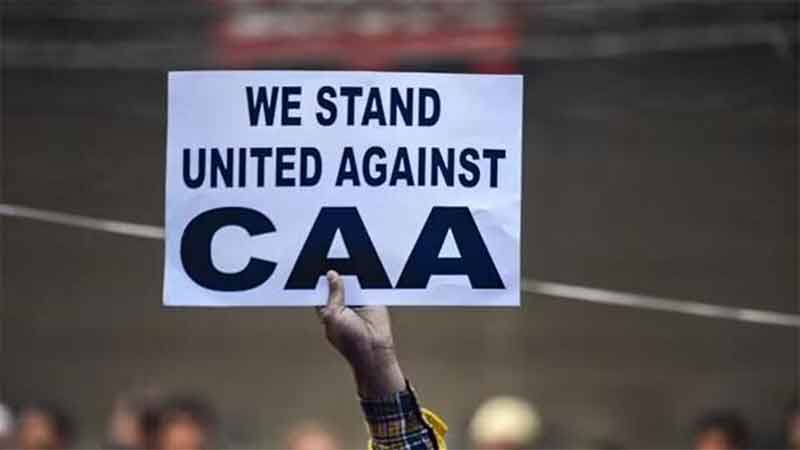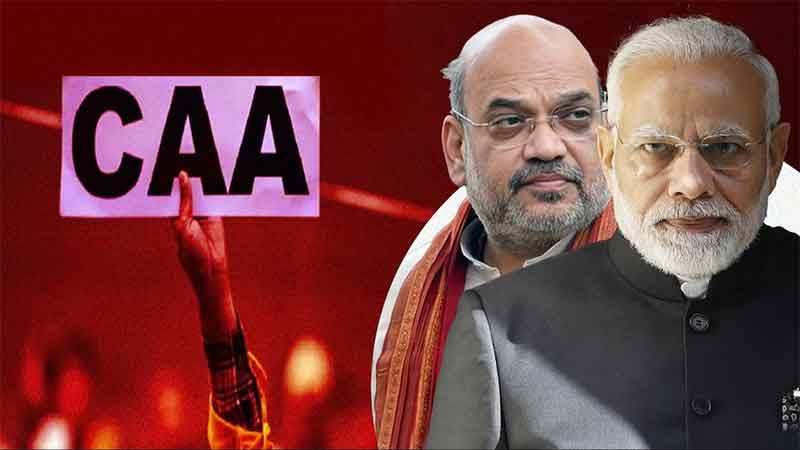
Jo aag laga rahe hain, TV pe unke jo drishya aa rahe hain, yeh aag lagaane vaale kaun hain, woh unke kapdon se hi pata chal jaata hai (From the visuals on TV, those setting the fire can be identified by their clothes) – Prime Minister Narendra Modi at an election rally recently.
By alluding to the clothes/dresses of certain protesters, India’s Prime Minister sunk to a new low (or could he?) in his bigotry and petty-mindedness. No one was fooled regarding his reference to the clothes and clothes-wearers he pointed to. The incidents – and the fire/violence – that he was hinting at had begun at Jamia Millia Islamia University in Delhi, and yes, many of the marchers and protesters were Muslims. But to zero-in only on Muslims, to equate the Jamia protests only as Muslim protests is to demonstrate a very blinkered view of things.
The protests against CAA, even from their beginning at Jamia, involved a wide variety of people and groups. To mark it as a Muslim-only protest, a Muslim-only issue is a cheap ploy at divisiveness. It is either to not understand the depths of resistance among the entire cross-section of Indian society to every step of the Modi government towards establishing its agenda of a nation that prioritizes Hindus and moves away from the multi-layered reality of India.
As someone who boldly announced a new slogan of “Sabka Vishwas (Everyone’s Trust)” to be appended to his early lofty mantra of deceptively utopian “Sabka Saath Sabka Vikaas (Everyone together, everyone’s development),” after his re-election in 2019, Narendra Modi stands increasingly exposed regarding his attitude and intentions with respect to minorities, especially Muslims. Please note, this article highlights Muslims because it is towards Muslims that Modi and his party (the BJP), and the larger family of organizations they are part of, the Sangh Parivar, have been vocally ill-disposed, discriminatory and exclusionary.
To pick on articles of dress/clothing that putatively identify the Muslims is a cheap trick admittedly but one not expected as a public remark from the prime minister of a multi-religion country like India. But, then, one must admit, that is also not totally unexpected. Modi presided over the worst violence against Muslims in Gujarat in 2002. And, there have been other extremely derogatory, stereotypical and insulting references to Muslims by Modi and his party members in the recent past. Constantly invoked is the fear of being overwhelmed by Muslims who “bear too many children”; Muslims have also been referred to as equivalent to puppies (accidentally) coming under his car by Modi himself, when recalling the riots against Muslim in Gujarat state in 2002. One of his chief ministers, Adityanath, has made extremely vile remarks concerning Muslims too.
It is a very cliched trope of global Islamophobia where articles of Islamic dress, such as the headdress, hijab etc have been targeted and even outlawed. We have seen official instances of such actions and laws in Europe (especially France) and several instances of such victimization in the United States, especially under Donald Trump.
India too has witnessed several contestations regarding headscarves, niqabs and burqas. The Shiv Sena requested a burqa ban this year. The Muslim Education Society in Kerala issued a notice to women not to attend educational institutions with any kind of face covering.
The pressures to conform to majoritarian mores are often huge and various personal preferences, often in matters of dress or accessories, come in conflict with various government rules, often in the name of security and unity. The Sikhs have been fighting a battle all over the world to have their own articles of faith such as the turban and kirpan recognized for what they mean to them.
Given that Narendra Modi has very few things going for him currently, what with dwindling political support across India, an economy he and his team are unable to grapple with and have led into a tailspin, a violent victimization of minorities, and his own party affiliates’ involvement in exploitation of women, one wonders with moral authority (or any authority) he made the despicable comment targeting the dress of Muslims?
This casually exclusionary, discriminatory comment is also a chilling reminder of the “Muslim as the other” image that continues its hold on him. Despite all the lip-service he pays to Muslims, despite his trips to Saudi Arabia and other Muslim countries, deep down abides in him the idea of Muslims as inveterate outsiders and others. They dress differently, for one. And that difference is not merely an aesthetic difference to him, as maybe in the case of Nagas who might sport one kind of headgear and the Himachalis another – both of which Modi is happy to don as needed in his political rallies. No – this particular difference in the case of Muslims only deepens and confirms their otherness for someone like Modi. It acts as a trigger. And as in his mind, so too in his public utterances, there is the discourse of “us” and “them.” He is unable to get beyond that.
Maulana Mohammad Ali Jauhar famously spoke of “belong[ing] to two circles of equal size, but which are not concentric. One is India, and the other is the Muslim world.” Such large-hearted, philosophically deep and complex ideas are beyond the ken of the Hindutva-wadis who wish for a flattened and unitary national and religious allegiance.
It was precisely against formulations as above that V.D. Savarkar (who inspired the RSS) argued, when he differentiated inflexibly between allegiance to the “Fatherland (India),” and the “Holyland” as being different among Hindus and Muslims. It is enough to mark Muslims as fundamentally anti-national, as the “other” even though such distinctions are false, flawed, shallow and bigoted.
That they wear clothes that seem different from those of Hindus, therefore does two things for those that follow Savarkar’s creed – the clothes mark the Muslims as different from Hindus; and on the other hand, it confirms to the Hindutawadis that because the Muslims are different, because they have other allegiances, they dress differently. Each line of argument reinforces the other, and the otherness of the Muslims. For them, the Hindutvawadis, there is just one circle – in which they travel endlessly.
Ananda Maitreya is a writer and a student of social movements. He has been involved in various struggles of the marginalized people, including Dalit and Adivasi movements.
SIGN UP FOR COUNTERCURRENTS DAILY NEWS LETTER













































